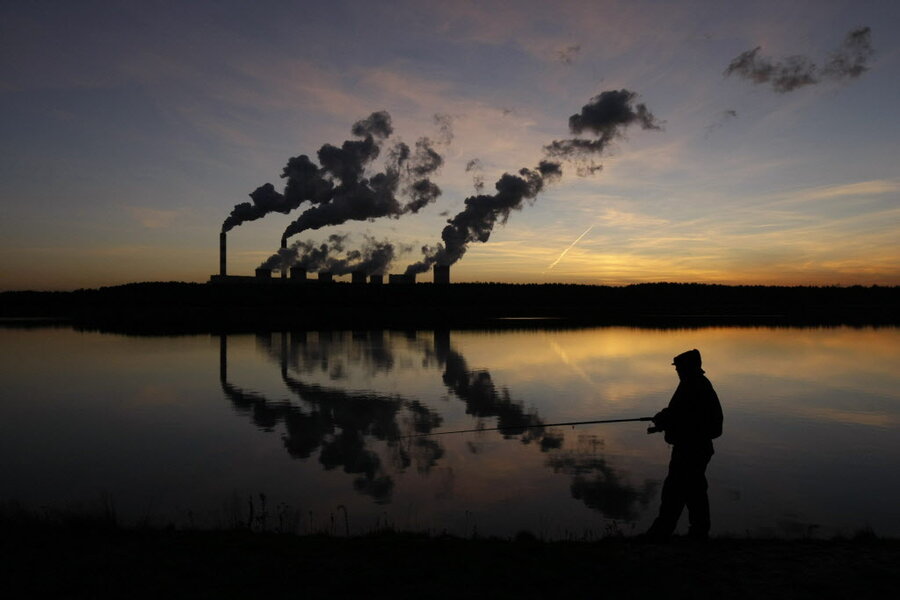Why coal-dependent Poland signed the Paris climate agreement
Loading...
The European Union officially ratified the Paris climate agreement on Wednesday, along with several member nations. Among them was a most unlikely signatory: Poland, whose reliance on coal had previously threatened the deal.
Developing nations have been especially wary of the Paris agreement, which will mandate considerable emission cuts when it goes into effect next month. They argue that strict emissions rules will stunt the economic growth of developing countries. Fully industrialized nations, they say, have already reaped the benefits of environmental carelessness.
Poland isn’t a developing country, but it is less developed than much of Europe. Could it lead way for other less-developed nations to curb emissions?
Polish energy security is based almost entirely on coal. In 2013, more than 85 percent of the country’s electricity was generated in coal-fired power plants. Coal miner unions are politically powerful, drawing support across party lines.
“There is a heavy reliance, not just because the power sector generates electricity overwhelmingly from coal, but because it’s deep in the nation’s psyche as well,” says Ian Sue Wing, a professor of climate policy at Boston University, in a phone interview with The Christian Science Monitor.
But will Poland have to end its fossil fuel love affair? The primary goal of the Paris agreement is to limit global warming to under 2 degrees Celsius (3.6 F.), compared to pre-industrial temperatures. Coal is among the most carbon dioxide-intensive fuels, up to 60 percent more emissive than natural gas. So complying with the EU’s climate target will be difficult for Poland, whose economy is so entrenched in the fuel.
“Encouraging alternative energy sources is critical, because you can’t reduce emissions while still relying on coal as a primary energy source,” says Noelle Eckley Selin, a professor at the Massachusetts Institute of Technology’s department of Earth and Atmospheric Sciences, in a phone interview with the Monitor. “That just won’t work.”
Why did Poland acquiesce to such a drastic change? One possibility is that the change won’t be very drastic at all.
Despite the EU’s overarching aspirational goals, nation-specific agreements are not included in the legally binding portion of the Paris agreement. Since emissions-reduction policies are nationally determined, countries have more wiggle room than you might guess.
“That flexibility, I think, encourages countries that might be a little more reluctant to join in and do what they can,” Dr. Selin says.
It’s also possible that the signing was, in some ways, opportunistic. There is a global oversupply of coal, and prices are down. Subsidies from the Polish government have propped up the coal sector, but labor is both intensive and expensive.
“It’s not a sector that was expanding, and you’ve now cut the legs out from under it,” Dr. Sue Wing says. “It’s just hastening a decline that was already occurring.”
Despite Poland’s heavy reliance on coal, most of its plants are decades old. As those plants continue to age, their output efficiency has declined. Even without abandoning coal, Poland could reduce emissions simply by revamping its energy infrastructure.
Now, the country has an opportunity to modernize. And with EU backing, that process could be underwritten by the European Central Bank, at least in part.
“If I were Poland, I would shamelessly beg. ‘OK, you want us to reduce emissions? We’ll shutter the coal mines. But we need regional structural funds to help depressed regions as a result of these shuttered mines,’ ” Sue Wing says.
But not all countries have the benefit of financial support. Indonesia, India, and South Africa all have large coal portfolios, but nobody to help with the adjustment. When it comes to curbing emissions, they’re on their own.
“There are much more limited options for you to buy power from someone else to keep the lights on,” Sue Wing says. “You are faced with the painful costs of modernization as a sovereign government, facing down powerful unions while also meeting the needs of a growing population who are energy-hungry.”
Even as Poland faces the same reduction challenges, the pressures are different. But in reducing its dependence on coal and developing alternative energy technologies, the country still could carve a path for less-developed countries to follow.
“The more technology that exists for alternative energy sources, and the cheaper that technology becomes, the more benefit there is for broad applicability and adoption,” Selin says. “The more countries that research or implement these limits, the better it is in general.”






